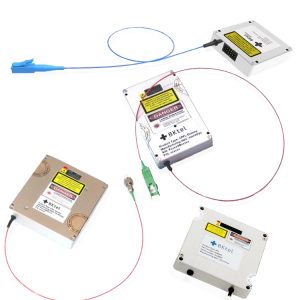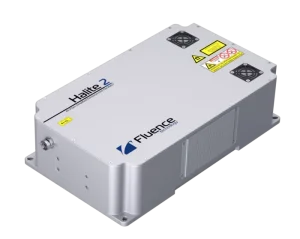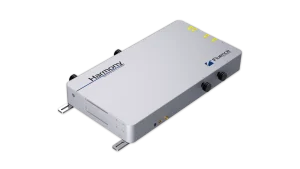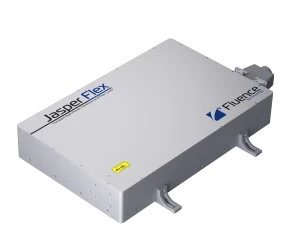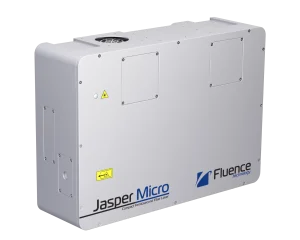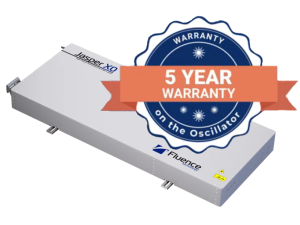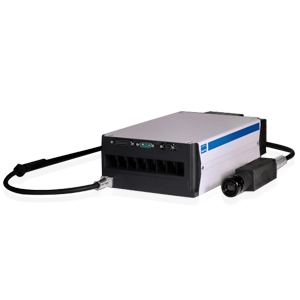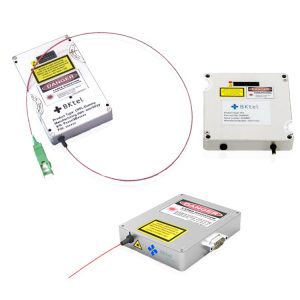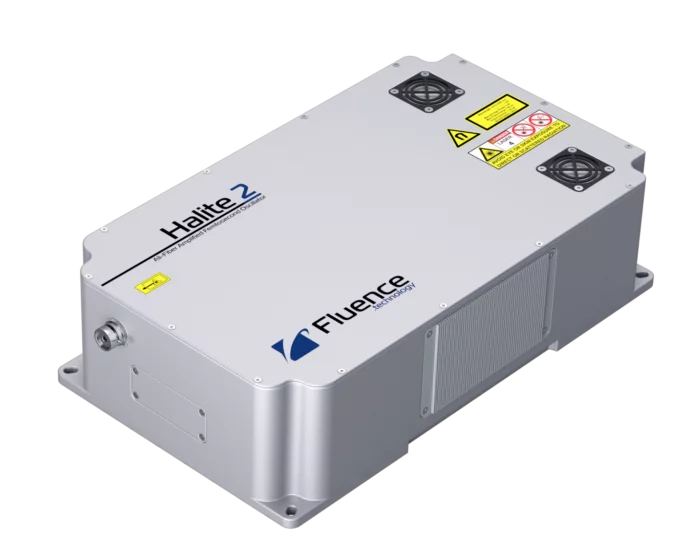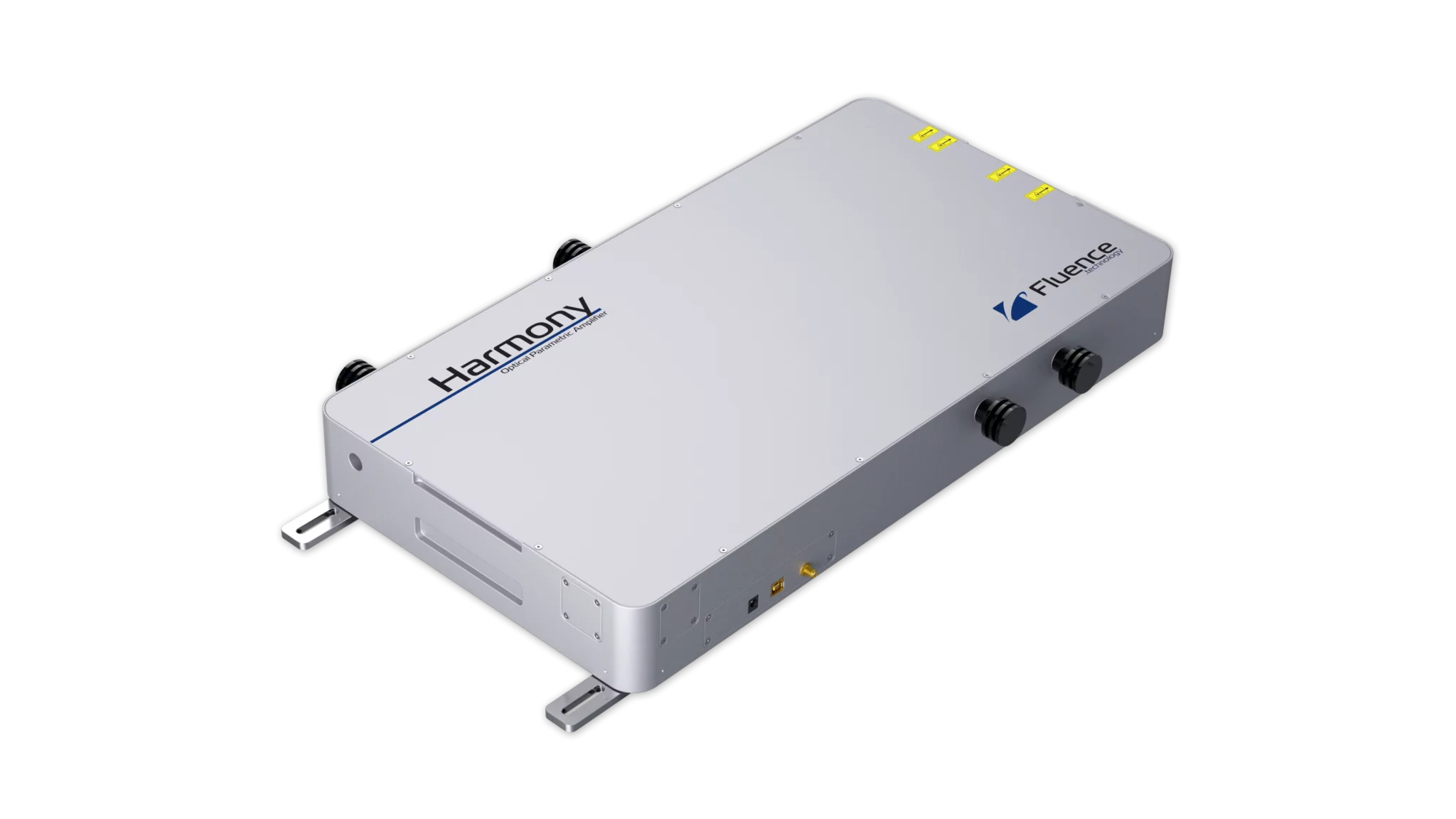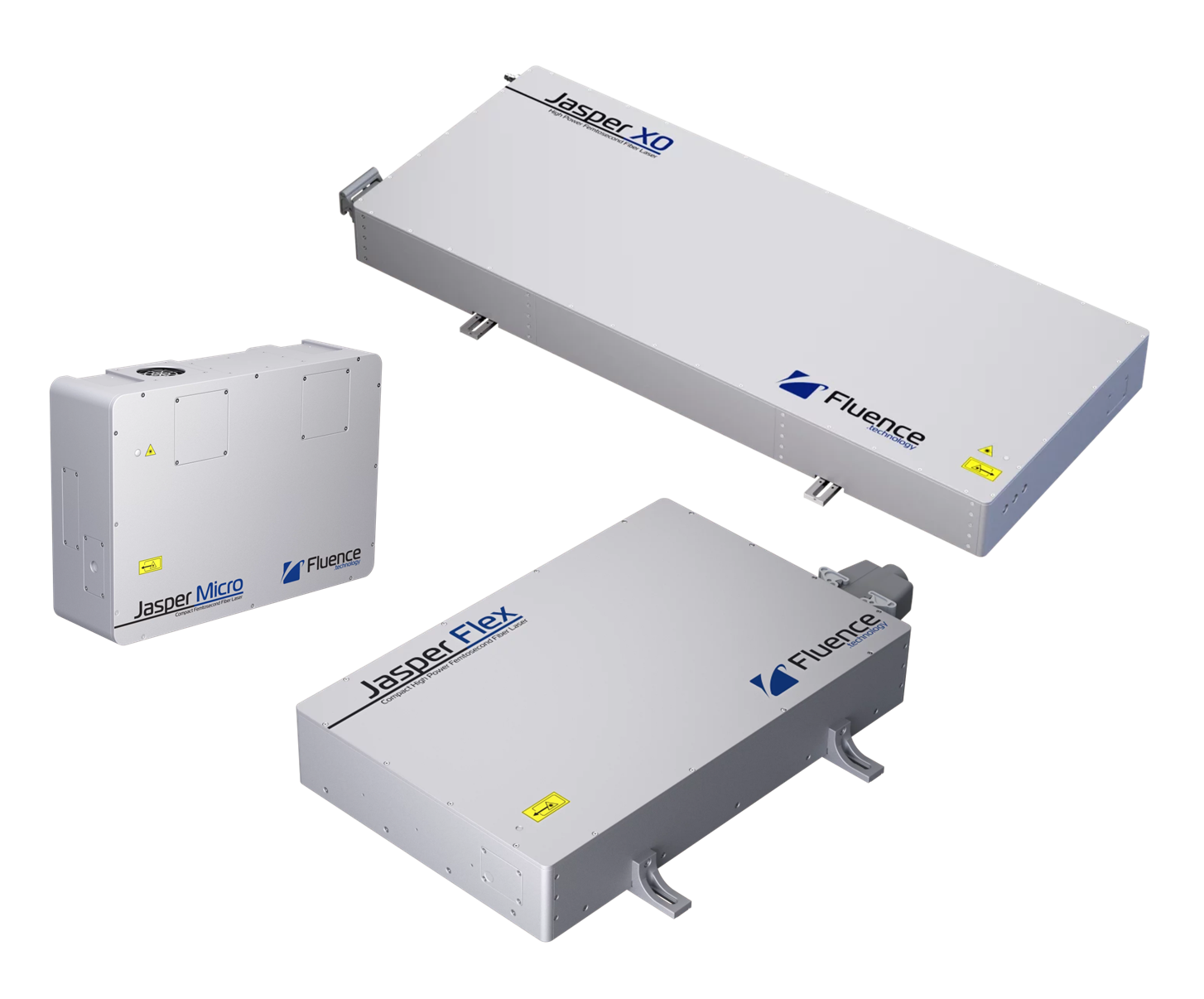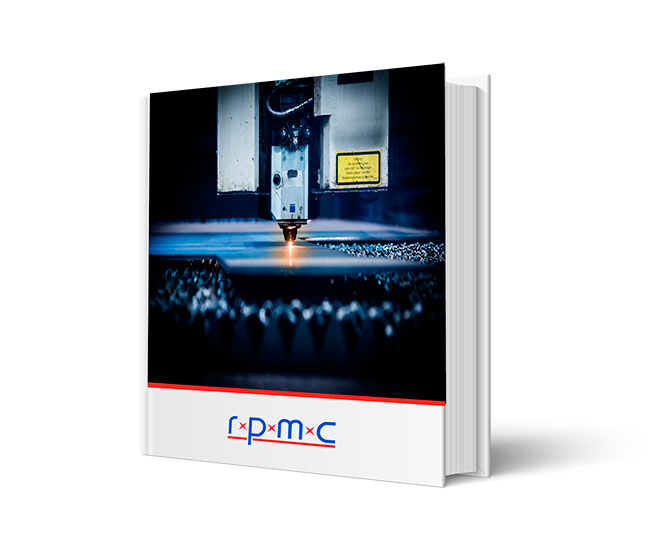Learn More About Pulsed Fiber Lasers
Typically, the fiber laser’s gain medium is doped with a rare-earth element, such as erbium (Er), ytterbium (Yb), or neodymium (Nd), just like the crystals used in most DPSS laser systems. However, fiber lasers offer several advantages over traditional DPSS lasers (e.g., Nd:YAG lasers). Some of these advantages derive from the geometry of the fiber optic itself, namely, the innate ability to have an extremely long single-mode optical cavity. This geometry produces either extremely high-power single-mode fiber lasers exhibiting unprecedented brightness or extremely narrow band lasers with near-perfectly single-frequency output.
Another advantage is that the fiber medium is flexible, which makes it easier to deliver the beam exactly where you need it. This ability can be highly advantageous when dealing with complex geometries and tight spaces. Typically, fibers exhibit a complex temperature-dependent polarization evolution, except if utilizing polarization-maintaining fibers or Faraday rotators. However, these solutions generally are not compatible with nonlinear polarization rotation mode-locking.
Since the fiber optic acts as a gain medium, several kilometers long in some cases, high-power fiber lasers benefit from the high optical gain and can provide much higher output powers compared to some other laser types. The extremely high surface area to volume ratio provides the inherent ability to efficiently remove heat generated, allowing continuous output of kilowatt levels of output power. The waveguide properties of the optical fiber mitigate thermal distortion, producing high-quality, near-diffraction-limited or better optical beam output (i.e., better beam quality). It should be noted that fiber lasers are different than fiber-coupled lasers. Fiber-coupled lasers have the beam output coupled into a fiber, as opposed to free-space output, and do not share all the same benefits as detailed above. However, fiber lasers do rely on one or more fiber-coupled laser diodes to pump the gain medium. Fiber amplifiers, lacking the ‘cavity’ to enable lasing, also rely on fiber-coupled diode pumps.
Our Pulsed Fiber Laser Products
RPMC is your Pulsed Fiber Laser supplier! We work with leading pulsed fiber laser source manufacturers, primarily in Europe. Our pulsed fiber laser products are available in a wide variety of configurations: q-switched or mode-locked, providing pulse repetition rates from single-shot up to 20 MHz, pulse widths (pulse durations) from 125ns down to 100fs, with pulse energy ranging from 1 nJ up to over 1 mJ, average power output up to 100W, and are available in wavelengths ranging from 1565nm (short-wave infrared or SWIR) down to the UV range through the use of harmonic generation and optical parametric oscillators (OPA). OEM laser packages and modules are available.
If you are looking for Continuous Wave Fiber Lasers, Click Here!
Deeper Dive into Pulsed Fiber Lasers
Fiber laser technology tends to provide a more compact system when compared to typical solid-state or gas lasers with a comparable power level, because of the ability of the fiber to be coiled up, allowing a considerable amount of gain media to be confined in a small space without all the traditional optical components. Compared to Ti:Sapphire lasers, for example, the fiber laser cost of ownership is generally lower since they are air-cooled and require little to no maintenance, requiring less supporting laser equipment. These lasers are also highly reliable, operating with high stability in high temperature and vibration prone environments.
Nanosecond Fiber Lasers
Nanosecond pulsed lasers emit optical pulses in the nanosecond duration. A nanosecond (ns) is a unit of time equal to one thousand-millionth of a second, one billionth of a second, or 10–9 seconds. Optical pulses with a pulse duration in the nanosecond range are required for many applications, including material processing, distance measurements, and remote sensing.
Picosecond Fiber Lasers
Picosecond pulsed lasers emit pulses with a duration in the picosecond range. A picosecond is a trillionth of a second, or 10-12 seconds. To be considered an Ultrafast Laser, the pulse duration of the laser needs to be 10ps or less. At a given pulse energy, the peak power of the laser increases as the pulse width gets shorter. Therefore, a picosecond laser will have a much higher peak power than a longer nanosecond or millisecond pulsed laser.
Femtosecond Fiber Lasers
Femtosecond pulsed lasers emit optical pulses with a duration below 1 picosecond. A femtosecond (fs) is one quadrillionth of a second or 10–15 seconds. Lasers that produce less than 10 picoseconds pulses belong to the category of Ultrafast Lasers or Ultrashort Pulse Lasers. Ultrafast Lasers are ideal for the non-thermal or cold ablation of any material, including metals, ceramics, polymers, composites, coatings, glass, plastics, diamonds, and PET.
Applications
Our pulsed fiber lasers are used in a wide range of high precision biophotonic and industrial applications including multi-photon microscopy, optogenetics, fluorescence lifetime, 3D scanning, LiDAR, materials processing applications like micromachining, surface treatment, thin film removal, welding, and many more!
How Can We Help?
RPMC Lasers is your Pulsed Fiber Laser Supplier. Our technical staff has over 100 years of combined knowledge, a vast understanding of the laser industry, and hands-on technical experience, enabling them to find the best laser for their clients, whether a standard or custom configuration.
With over 25 years experience matching the right laser source to your application, and our wide range of industry-leading pulsed fiber laser options, the team at RPMC is prepared and eager to help you find the right solution!
If you have any questions, or if you would like some assistance please Contact Us here. Furthermore, you can email us at [email protected] to talk to a knowledgeable Product Manager.
Alternatively, use the filters on this page to assist in narrowing down the selection of pulsed fiber lasers for sale. Finally, head to our Knowledge Center with our Lasers 101 page and Blogs, Whitepapers, and FAQ pages for further, in-depth reading.
Check out our Online Store: This page contains In-Stock products and an ever-changing assortment of various types of new lasers at marked-down/discount prices.
Additional Resources
Whitepapers:
Blogs:
